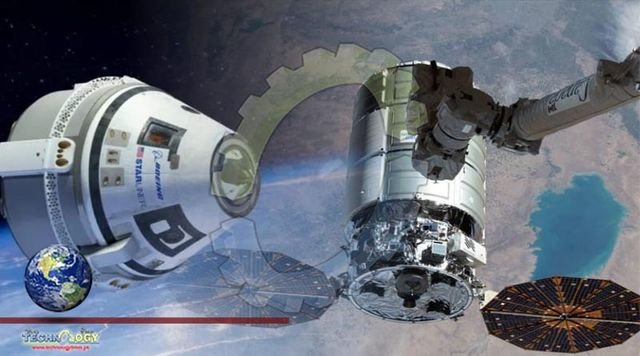The International Space Station (ISS) Crew is getting ready to welcome Boeing’s new Starliner crew ship due to lift off next week on the company’s Orbital Flight Test-2 mission. Meanwhile, the seven-member Expedition 67 crew continued its human research and robotics work today.

NASA Flight Engineers Kjell Lindgren and Bob Hines continued training for the arrival of the Starliner spacecraft targeted for 7:10 p.m. EDT (4:10 p.m. EDT) on Friday, May 20. The duo reviewed the OFT-2 mission profile and rehearsed the remote commanding of Starliner on a computer. The device that sends and receives data from approaching commercial crew vehicles, Common Communications for Visiting Vehicles (C2V2), was activated earlier this week. Starliner will lift off atop the Atlas-V rocket from United Launch Alliance at 6:54 p.m. EDT (3:54 p.m. PDT) on Thursday, May 19, from Cape Canaveral Space Force Station in Florida.
Lindgren and Hines also began the day collecting and stowing their blood samples for later analysis. Hines then activated the Astrobee robotic free-flyer assistants inside the Kibo laboratory module. Lindgren later stowed the toaster-sized, cube-shaped robots after the autonomous devices spent the day demonstrating ways to detect and repair faulty station hardware.
Astronaut Jessica Watkins became acquainted with Astrobee procedures and swapped components in the station’s waste and hygiene compartment located in the Tranquility module. Flight Engineer Samantha Cristoforetti from ESA (European Space Agency) spent all day Friday testing the rHEALTH ONE medical device for its ability to identify cells, microorganisms, and proteins in microgravity.
Over in the station’s Russian segment, Commander Oleg Artemyev worked throughout Friday transferring water from the ISS Progress 80 cargo craft into the Zvezda service module. He also packed old station gear for disposal inside the ISS Progress 79 resupply ship. Denis Matveev, a flight engineer, worked on ventilation systems and photographed the condition of panels inside Zvezda. Flight Engineer Sergey Korsakov continued testing the mobility of the European robotic arm attached to the Nauka multipurpose laboratory module.
Source: This news is originally published scitechdaily
